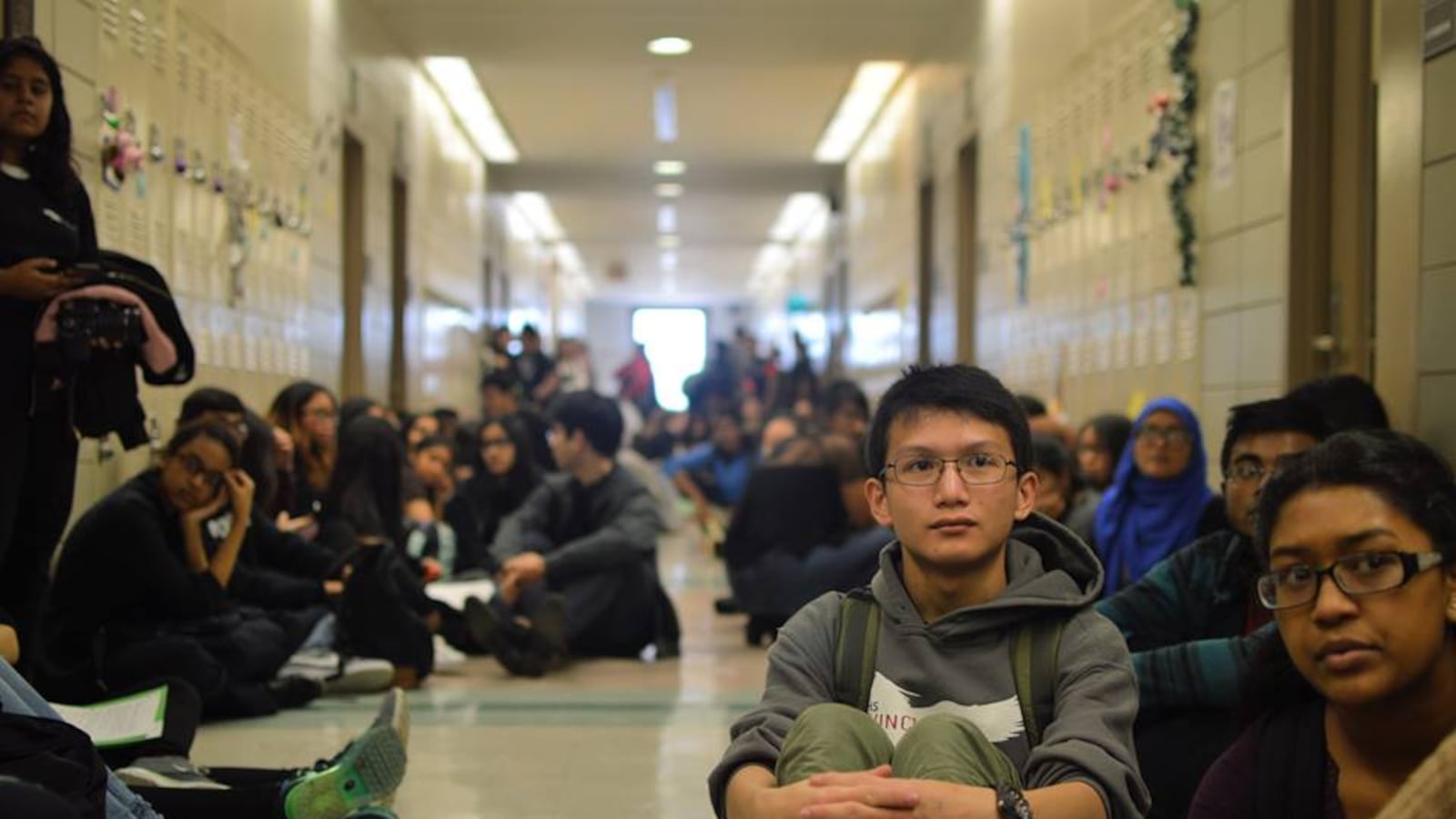After courts lift school desegregation orders, students of color are more likely to drop out, a new study finds — the latest signal that school segregation harms black and Hispanic kids.
Court-mandated integration efforts across the U.S. have sharply declined in recent decades. Of 480 school districts that had an integration order in place in 1991 (and at least 2,000 students), 214 had the court order eliminated by 2010. Officials often moved quickly to dismantle assignment systems designed to achieve integration.
In those districts where a desegregation decree was lifted, researcher David Liebowitz found immediate and persistent increases in the dropout rates for both black and Hispanic students.
Specifically, lifting the court orders led to a sustained increase in dropout rates among Hispanic students of 3 percentage points, and black students of 1 percentage point, compared to similar districts where mandates remained.
White students were no more or less likely to drop out of high school after the districts resegregated — a finding generally consistent with past research on school integration, which has been shown to help students of color and have little measurable impact on white students.
“If policymakers have an interest in increasing the graduation rate of black and Hispanic youth, one tool in their disposal … is promoting racially integrated schools,” said Liebowitz, who conducted the peer-reviewed study as a graduate student at Harvard and is now an analyst with the OECD.
Mandates to eliminate school segregation came after landmark Supreme Court cases, including Brown v. Board of Education in 1954 and Swann v. Charlotte-Mecklenburg in 1971. The affected districts educated millions of students in total, and were usually, though not exclusively, in the south.
But in the early 1990s, the Supreme Court made it easier for districts to get out of court supervision — and many did.
Charlotte-Mecklenburg, one of the districts that pioneered using busing to integrate its schools, had its mandate lifted in 1999, for example. School board members would soon put in place a choice plan that put much greater weight on neighborhood assignment. Subsequent research showed that school segregation had significantly expanded, to the detriment of students in newly segregated schools.
Nationwide, schools have become increasingly stratified economically over the last several decades. Racial segregation has also increased by some measures, largely because there are more students of color than before.
That means fights over whether — and how aggressively — to integrate schools continue.
In New York City, Mayor Bill de Blasio recently issued a school diversity plan, which was widely panned as not ambitious enough. In Kentucky, a longstanding integration initiative was recently threatened by state lawmakers, though it eventually died in the legislature. In Charlotte, North Carolina, efforts to (re-)integrate schools persist, but remain contentious.
Liebowitz hopes his findings encourage more places to act.
Districts have leeway to do so: A 2007 Supreme Court decision was widely, but inaccurately, interpreted as prohibiting race-based integration efforts. In fact, guidance from the Obama administration explicitly allowed districts to “consider the race of students in carefully constructed plans to promote diversity or, in K-12 education, to reduce racial isolation.”
The directive remains in place under the Trump administration, but Liebowitz worries it will be rescinded.
“If legal doctrine shifts to prohibit consideration of race in the development of policy or on the impact that a policy will have, it may lead to other similar negative outcomes,” Liebowitz wrote.


